Leeks and their cultivation
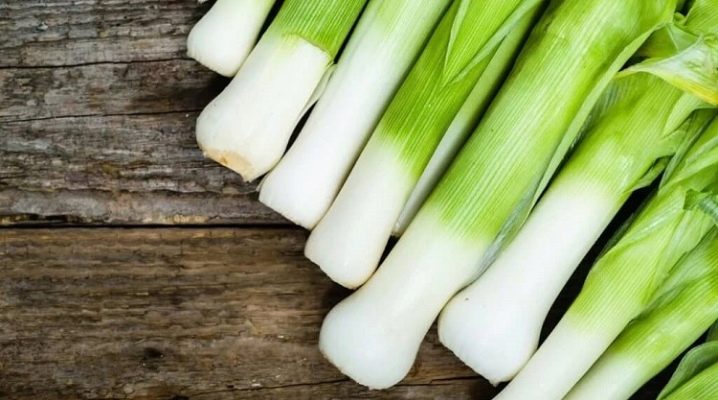
Leeks are not a frequent visitor to Russian vegetable gardens, although they are unpretentious and are a valuable gastronomic culture. Let's see what a leek looks like and how easy it can be to grow.
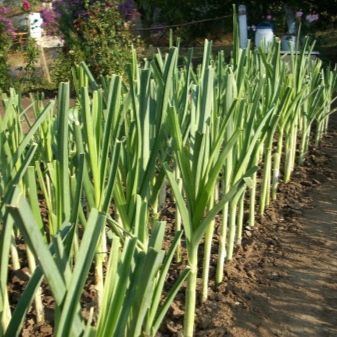
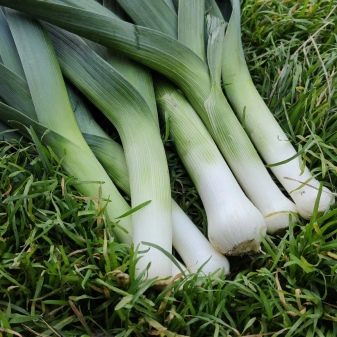
general description
Leek is a herbaceous biennial plant... Grown as an annual. Outwardly, it differs from ordinary onions. The leaves are wider, encircling a powerful stem like a fan. The usual bulb is absent; at first glance, the plant ends with a stem, from which a small bunch of roots sticks out. In fact, this is a misleading impression. Both the visible bulb and the stem are false. In the ancestors of modern leeks, the bulb was more pronounced, today it has decreased in width. What looks like a stem and bulb are the thickened lower parts of the leaves. The length of the so-called bulb is 10-12 cm, the diameter is 2-8 cm. The lower parts of the leaves are light green.
Leek blooms, like all plants from the onion family, with a spherical umbrella of small loose flowers. Flowering begins in the 2nd year. The plant throws out an arrow up to 2 m high. The seeds are very similar to onion seeds - triangular. They eat all the parts, they are all edible, and this is no difference from onions. Most often, white legs (false stem) are eaten. You can also eat the green part, but it gets coarser with age. But young green leaves have a spicy, slightly pungent taste, teasing, aromatic and more interesting than that of onions. Known since the time of Ancient Egypt, it was widely cultivated in medieval Europe. The world leader in the production of leeks is France.


The most interesting varieties.
- Columbus. A variety that is suitable for the Leningrad region. Very early. Legs reach 7 cm in diameter, up to 35 cm long, very juicy. It stands out against the background of other varieties with very thick legs.
- "Karantansky". Late ripening, compact, legs up to 25 cm in length, 4 cm in diameter, tender and juicy. Ideal for small beds and dense seeding.
- "Casimir". Tall, slender variety with long, elegant legs. False stems 22-26 cm high. Mid-season.
- "Goliath". A very large early universal variety, legs can reach 8 cm in diameter and up to 50 cm in length.
- "Terminal". Czech mid-season variety. The legs are very long and slender, up to 40 cm in length. The plants are powerful and graceful at the same time.
- Siberian Giant. Mid-season, very hardy variety with giant legs up to 50 cm in length. The weight of the legs is 2-2.7 times greater than that of the "Terminal".
- "Bulgarian giant". It differs from the "Siberian Giant" in slightly smaller legs. Length - up to 45 cm. Otherwise it is very similar, the same mid-season, cold-resistant.
Leeks are often confused with the lettuce culture. But the difference between them is fundamental. The genus of lettuce from the Aster family has nothing to do with onions at all. Lettuce is the common name for a number of leafy or head salads.
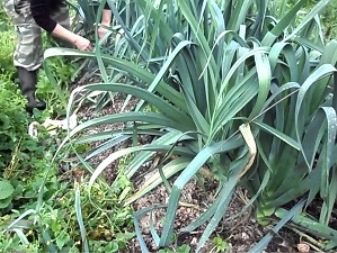

Landing
The culture has a long growing season - up to 6 months. The stem will begin to grow only 2-3 months after sowing. Therefore, in most regions of the Russian Federation, leeks are grown through seedlings. Seeds are immediately planted in the ground only in the southern regions.
Seeds
Seeds are sown from mid-March to April in a greenhouse or greenhouse. To avoid picking, the seeds are immediately laid out in an individual container.... Peat tablets or cassette cells are best suited. 1-2 seeds are placed in each cell.
Immediately sown to a permanent place at the end of June, in this case, the harvest will be only the next year. In October, instead of harvesting, the plants are once again spud and covered. And it is also possible to sow seeds before winter: in October, seeds are sown immediately to a permanent place and covered with a layer of peat or humus. Seeds remain viable for 2-4 years.
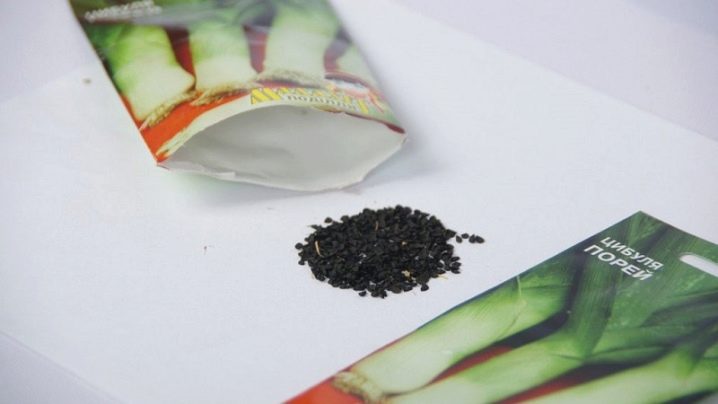
Seedlings
Seedlings need to be highlighted, young plants should receive 10-12 hours of light. Temperature range:
- seed germination - + 22 ... 24 ° С;
- immediately after germination - daytime + 17 ... 20 ° С, nighttime + 10 ... 12 ° С.
Higher temperatures will cause flower arrows to form too quickly. Seedlings are planted in open ground from 1 to 20 May, the age of seedlings is 50-60 days. 2 weeks before disembarkation, the seedlings are accustomed to fresh air - taken out into the street, gradually increasing the time. The distance between seedlings is 7-10 cm, depending on the variety, in row spacings - 15-40 cm each. Different planting schemes are possible, it is better to focus on the recommendations of the seed manufacturer... For example, leeks "Karantansky" are sown every 6 cm, in row spacing of 25 cm.
When planting seedlings, you can shorten the leek leaves. Especially if the roots have been damaged. And you can also shorten them in the summer to direct the juices of the plant for the formation and growth of legs. Leaves are shortened by no more than 1/3. Soil for leeks should be moisture-capacious, fertile. The best choice is high-humus loam. In heavy clay soils, plants often get sick. In too sandy, they do not have enough food, they grow slowly. Acidic soils are not suitable, the pH should be 7-7.6.
Before planting, it will be useful to fertilize any soil, except very oily, with humus: 2-3 buckets per 1 sq. m.
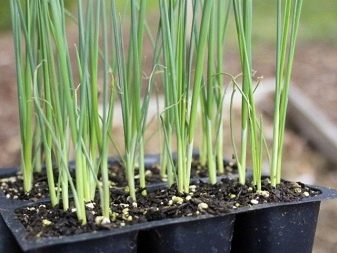
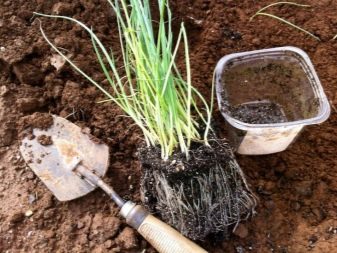
Care
Leek seedlings are planted in special holes in the garden bed. Make grooves up to 12-15 cm deep. The pits are needed to make it easier to spud the plants. Hilling allows you to get longer, juicier and white legs. After the first watering, the soil will be washed into the grooves, and they will be equal to other soil. That is, such an organization of planting relieves the gardener from the first hilling. In the future, planting is spud 3-5 times over the summer. If you need to get seeds, the plants are left for the winter. Selected bushes are spud, mulched with peat and sawdust.
Watering for leeks is very important, but in the first 3 days after planting seedlings in the ground, it is better not to water it, so as not to provoke the development of diseases... In the future, watered 1 time in 5-7 days with warm water, pouring 1-1.5 buckets of water per 1 sq. m. Leek loves feeding.
Therefore, in addition to the first filling of the soil with compost, it will be useful to water the beds with green infusion on nettle or comfrey leaves once every 3-4 weeks.

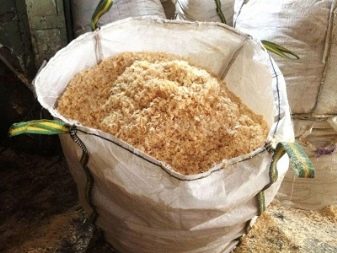
Diseases and pests
The main pests and diseases of leeks.
- Onion flies... It feeds on plant tissues and spreads viral diseases. The leaves are covered with a dark bloom. From them and from tobacco thrips are treated with the preparations "Confidor", "Karate Zeon".
- Tobacco thrips.
- Onion fly - the most dangerous pest for the culture. The fly larvae settle inside the stems and suck the juice out of them, the adults feed on the lower parts of the plant. Treat with insecticides "Connect", "Vantex" or sprinkle the beds with pepper powder and wood ash.
- Alternaria... Leeks are most commonly affected in warm and humid weather. It is often a secondary disease - on plants already affected by other diseases or weakened by an excess of nitrogen in the soil. Treatment - fungicides "Quadris", "Signum", "Kurzat", "Acrobat".
- Powdery mildew. The leaves are covered with a white bloom, reminiscent of flour or frost. The causative agents are various fungi. The plantings are treated with Topsin M and Quadris preparations.
Disease prevention.
- Thorough autumn cleaning of the site. All plant residues are either burned or plowed very deeply.
- Compliance with crop rotation. Onions should not be sown in the same place every year. There should be at least 500 m between plantings for sale and for seeds.
- Do not sow onions next to or after tomatoes... They are most often the source of powdery mildew.
- Joint planting with carrots. The smell of carrot leaves repels the onion fly.
- Seed dressing before sowing with Fitosporin.
- The use of growth stimulants and biological protection agents: Biocin-F, Fitosporin, Epin, Zircon.
- Good care. Powdery mildew often affects plants suffering from moisture deficiency. Stagnant water in the soil provokes bacteriosis and attracts onion flies.
Occasionally, leeks can be affected by fusarium.
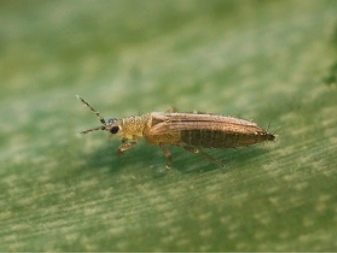

Collection and storage
Cleaning is carried out in the fall, before the arrival of frost. Mature plants are not afraid of cold weather, but negative temperatures are undesirable. The optimal harvesting period is October 1-15. Dig in carefully, with a pitchfork, so as not to damage the stems. The dug out plants are allowed to lie down in the fresh air for 2-3 hours to dry out. The harvest is sorted out, it makes no sense to put all too small stalks for storage. The largest ones are selected. The roots are cut, but so as not to damage the bottom. It is best to leave 1/3 of the roots. There is no definite opinion about cutting the leaves. But most gardeners adhere to the idea that the leaves are best left. Any damage weakens the plant, and infections can penetrate through the wounds. Store the crop in a cool, dry place for up to six months. A basement, cellar, balcony are suitable as a place. Storage temperature - from 0 to + 4 ° С. With a warm shelter, it can withstand frosts down to -7 ° C.
You can place the plants at the ends in a bowl, on the bottom of which a mixture of sand, sawdust and peat is laid. The stems are tightly, one to one, laid, the mixture is slightly poured onto the roots, but so that the white stems remain in the air. The substrate is slightly moistened. At a temperature of + 2 ° C, plants will grow slowly. As a result, the harvest will last longer - until mid-spring. Leeks are perfectly stored in freezing - up to 1 year. It is washed well, cut into pieces, placed in plastic bags and placed in the freezer. Leek stalks can be dried, especially if they are substandard and not suitable for storage. All excess leaves are cut off, the legs are freed, washed under running water so as to rinse the sinuses... Then the stems are cut into thin plates, 1 mm each, disassembled into rings, dried in an oven, stored in a closed container.
Leeks are the only vegetable that gets better, not worse, during storage. A plant in cool, dark conditions stores vitamin C and becomes even more useful.
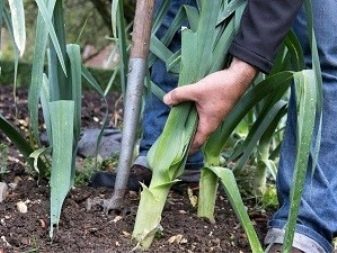
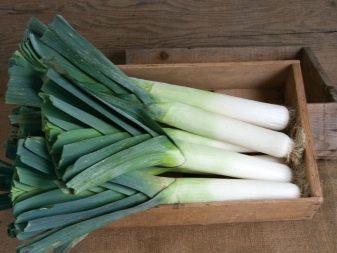













The comment was sent successfully.